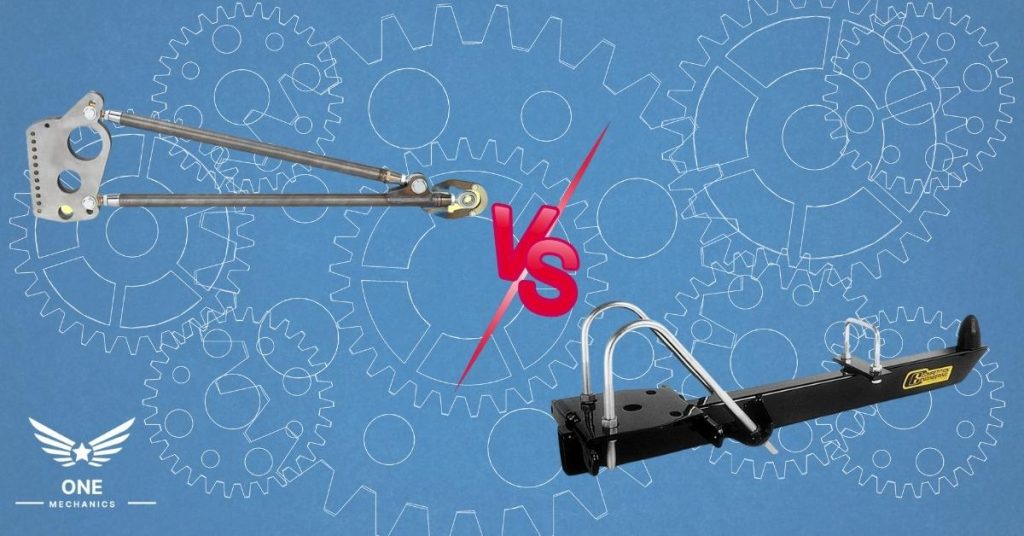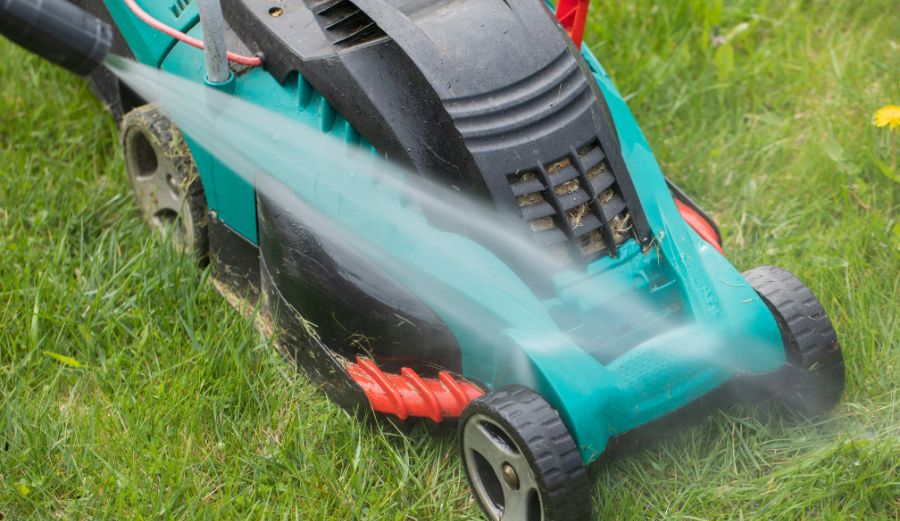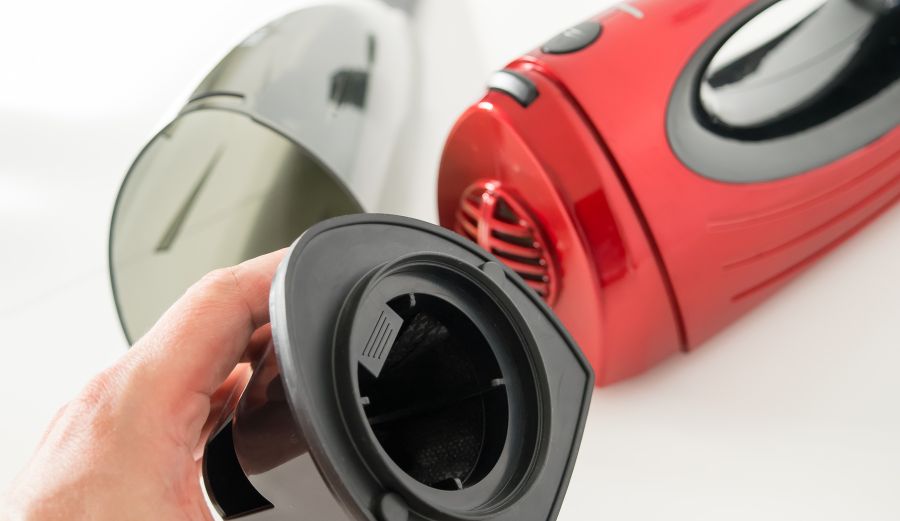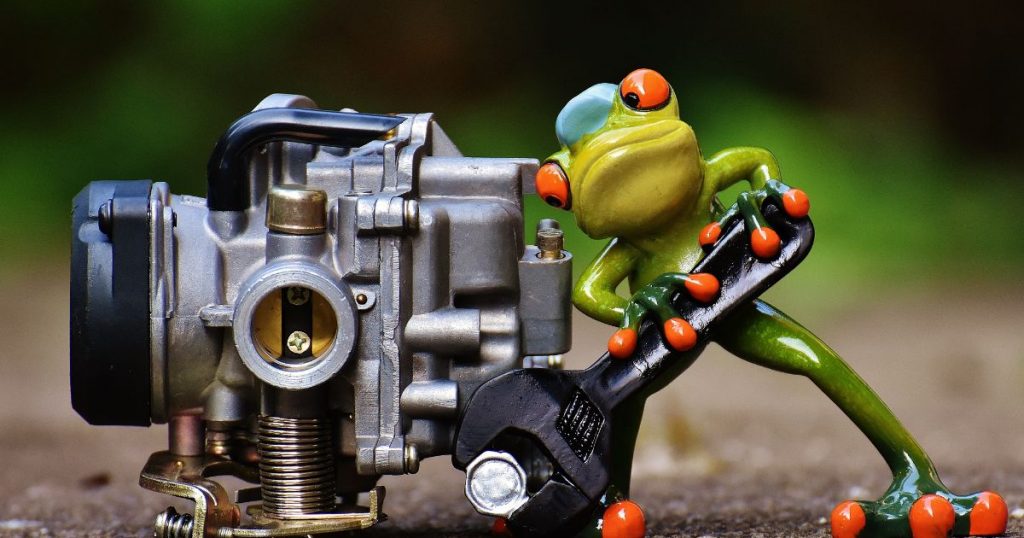
f you want to upgrade your vehicle’s traction and stability, you may have heard of two popular suspension components: ladder bars and traction bars. While both bars serve a similar function, they differ in design and operation.
In this article, we’ll explore the differences between ladder bars and traction bars and help you determine the best fit for your vehicle. Whether you’re a racer or an off-roader, understanding the advantages and disadvantages of each type of bar can help you make an informed decision to enhance your vehicle’s performance. So let’s dive in!
Ladder Bars Vs Traction Bars: The Basics
Before we dive into the differences between ladder bars and traction bars, it’s important to understand the basics of these suspension components. Both bars are designed to improve the traction and stability of a vehicle, but they work in slightly different ways.
Understanding the basics of these two suspension components can help you decide which one is the best choice for your vehicle. So, let’s get started!
Ladder Bars: The Basics
Ladder bars are a suspension component primarily used in high-performance applications, such as drag racing, where preventing wheel hop and maintaining proper alignment is crucial. These bars are designed to keep the rear axle from rotating and twisting under acceleration, which can lead to unstable handling and loss of traction.
Ladder bars consist of two parallel bars that attach to the rear axle housing and the frame or subframe of the vehicle. The bars work by controlling the movement of the rear axle, which helps maintain proper alignment and reduces wheel hop. However, the rigid design of ladder bars means they can limit suspension travel, leading to a harsh ride on rough roads.
Traction Bars: The Basics
Traction bars are a suspension component commonly used in off-road and towing applications. These bars help to reduce axle wrap, which can cause wheel hop and loss of traction when accelerating.
Traction bars are typically mounted to the vehicle’s leaf springs or suspension control arms and feature a pivot point that allows for some movement while still controlling axle wrap. They work by transferring the torque from the rear axle to the vehicle’s frame, which helps to maintain proper alignment and improve traction. Unlike ladder bars, traction bars do not limit suspension travel, which can result in a more comfortable ride.
Ladder Bars Vs Traction Bars: The Installation Process
Installing ladder bars or traction bars can be a great way to enhance the traction and stability of your vehicle. While both bars serve a similar purpose, the installation process can vary. In this section, we’ll break down the installation process for ladder bars vs traction bars in easy-to-follow steps.
Ladder Bars Installation Steps
- Begin by securing your vehicle on a level surface and chocking the wheels to prevent it from rolling.
- Remove the rear wheels and disconnect the driveshaft from the rear axle.
- Locate the ladder bars’ mounting points on the vehicle’s frame or subframe.
- Align the ladder bar brackets with the mounting points and weld them.
- Double-check the alignment and adjust before fully welding the brackets to the frame or subframe.
- Install the ladder bars onto the brackets and attach them to the rear axle housing using U-bolts or other mounting hardware.
- Adjust the ladder bars to the correct angle to ensure proper alignment and function.
- Reinstall the driveshaft and rear wheels.
- Take the vehicle for a test drive and make any necessary adjustments or tuning to achieve optimal performance.
Traction Bars Installation Steps
- Start by securing your vehicle on a level surface and chocking the wheels to prevent it from rolling.
- Remove the rear wheels and locate the mounting points for the traction bars.
- Install the traction bars onto the leaf springs or suspension control arms using mounting hardware.
- Adjust the traction bars to the correct angle to ensure proper alignment and function.
- Double-check the alignment and adjust as necessary before tightening the mounting hardware.
- Reinstall the rear wheels.
- Take the vehicle for a test drive and make any necessary adjustments or tuning to achieve optimal performance.
Whether you’re installing ladder bars or traction bars, it’s important to follow the manufacturer’s instructions and ensure the bars are installed correctly to ensure safe and optimal performance.
Ladder Bars Vs. Traction Bars: Similarities and Differences
While both ladder bars and traction bars are designed to enhance the traction and stability of a vehicle, there are some key differences between the two. This section will explore the similarities and differences between ladder bars and traction bars.
Similarities between Ladder Bars and Traction Bars
- Both ladder and traction bars help reduce wheel hop and axle wrap, improving traction and stability.
- Both bars help maintain proper alignment of the rear axle, which can improve handling and reduce tire wear.
- Both bars can be installed on a variety of vehicles and can be adjusted to achieve optimal performance.
Differences between Ladder Bars and Traction Bars
- Ladder bars are generally used in high-performance applications, such as drag racing. They are designed to limit suspension travel to prevent wheel hop. Traction bars, on the other hand, are commonly used in off-road and towing applications and do not limit suspension travel.
- Ladder bars are typically more rigid and require welding for installation. In contrast, traction bars can be bolted on and feature a pivot point allowing some movement.
- Ladder bars may require more frequent adjustment or tuning to achieve optimal performance. In contrast, traction bars are generally set and forgotten once installed.
Ladder Bars Vs. Traction Bars: Pros and Cons
Suppose you’re considering upgrading your vehicle’s suspension with a ladder or traction bars. In that case, weighing each option’s pros and cons is important. This section will explore the advantages and disadvantages of ladder bars vs. traction bars.
Pros of Ladder Bars
- Ladder bars can effectively limit suspension travel and prevent wheel hop, making them ideal for high-performance applications like drag racing.
- Ladder bars are typically more rigid and offer more precise alignment than traction bars.
- Ladder bars can be adjusted to achieve optimal performance. They can be a great way to fine-tune your vehicle’s handling.
Cons of Ladder Bars
- Ladder bars can be more difficult to install, often requiring welding and the rear axle housing modification.
- Ladder bars may require more frequent adjustment or tuning to achieve optimal performance.
- Ladder bars can be expensive compared to other suspension upgrades.
Pros of Traction Bars
- Traction bars can reduce axle wrap and improve stability, making them ideal for off-road and towing applications.
- Traction bars are generally more affordable compared to ladder bars.
- Traction bars can be easily installed without the need for welding or modification of the rear axle housing.
Cons of Traction Bars
- Traction bars may offer a different level of rigidity and precise alignment than ladder bars.
- Traction bars do not limit suspension travel, which may not be ideal for high-performance applications such as drag racing.
- Traction bars may be less effective at reducing wheel hop than ladder bars.
Do Traction Bars Make A Difference?
Yes, traction bars can make a significant difference in the performance and stability of your vehicle. Traction bars are designed to reduce axle wrap, which occurs when the vehicle’s torque causes the axle to rotate and twist, resulting in a loss of traction and stability. Reaction bars can improve acceleration, reduce wheel hop, and increase stability by reducing axle wrap.
Traction bars can also help improve your vehicle’s handling by reducing the axle’s lateral movement, which can improve the alignment and reduce tire wear. Additionally, traction bars can effectively prevent damage to the drivetrain and suspension caused by excessive movement and stress.
If you’re experiencing wheel hop, axle wrap, or instability in your vehicle, installing traction bars can make a noticeable difference in the performance and handling. However, it’s important to choose the right type of traction bar for your specific needs and to ensure proper installation to achieve optimal results.
Ladder Bars Vs Traction Bars: The Cost
When upgrading your vehicle’s suspension with ladder bars or traction bars, the cost can be a significant factor in your decision-making process. Here, we’ll explore the cost differences between a ladder and traction bars.
Ladder Bar Cost
The cost of ladder bars can vary widely depending on the specific type of bar, materials used, and installation requirements. On average, ladder bars can range from $300 to $1,500 or more. Remember that the installation cost can add to the overall price, as welding and modification of the rear axle housing may be necessary.
Traction Bar Cost
Compared to ladder bars, traction bars are generally more affordable. Traction bars can range from $100 to $500, with some high-end models costing up to $1,000. Unlike ladder bars, traction bars can often be installed without welding or modifying the rear axle housing, which can save installation costs.
It’s important to remember that the cost of suspension upgrades can vary depending on the brand, materials used, and the complexity of the installation. It’s also important to factor in additional costs such as labor, alignment, and tuning to achieve optimal performance.
Ultimately, the cost of ladder bars vs. traction bars will depend on your specific needs and the intended use of your vehicle. While ladder bars may offer better performance in high-performance applications, traction bars can be a more affordable and practical option for off-road and towing applications.
Ladder Bars Vs Traction Bars: Which One Is Better?
When it comes to upgrading your vehicle’s suspension, the decision between ladder bars vs. traction bars can be a difficult one. Both bars are designed to improve traction, stability, and handling, but which is better? Let’s take a closer look at some of the key differences.
Ladder Bars vs. Traction Bars: Performance
Ladder bars are typically favored for high-performance applications requiring maximum traction and stability. The design of ladder bars allows for greater control over the rear axle, reducing movement and improving traction under acceleration. Ladder bars are also more effective at reducing axle wrap, which can lead to wheel hop and loss of traction.
On the other hand, traction bars are generally more suited for off-road and towing applications. Traction bars are designed to reduce axle movement and prevent wheel hop, improving traction and stability on uneven terrain or while towing heavy loads. While traction bars may not offer the same level of control as ladder bars, they can still improve performance.
Ladder Bars vs. Traction Bars: Adjustability
Ladder bars are often adjustable, allowing for fine-tuning of the suspension to achieve optimal performance. The adjustability of ladder bars can allow customization to suit various applications, including drag racing, street performance, and off-road use.
Traction bars, on the other hand, are typically non-adjustable, and the degree of improvement in traction and stability may be limited. However, some high-end traction bars may offer limited adjustability, which can help to fine-tune the suspension for better performance.
Ladder Bars vs. Traction Bars: Compatibility
Another important factor to consider when choosing between ladder bars vs. traction bars is compatibility with your vehicle. Ladder bars may not be compatible with certain suspension setups, such as independent rear suspension. They may require modification or custom fabrication to install.
Traction bars, on the other hand, are generally compatible with a wide range of vehicles and suspension setups, making them a more versatile option. However, it’s still important to ensure that the traction bars you choose are compatible with your vehicle before purchasing.
Over To You!
Ultimately, the decision between ladder bars vs. traction bars comes down to one question:
what do you want to do with your vehicle?
Are you looking for maximum performance and control on the track or strip?
Or are you seeking an affordable and practical upgrade for off-road or towing applications?
Whatever your needs, ladder, and traction bars offer unique benefits and drawbacks.
But here’s the bottom line: whether you’re a seasoned gearhead or a casual driver, upgrading your suspension with ladder bars or traction bars can make a noticeable difference in your vehicle’s performance and handling. So why not leap and see what difference these upgrades can make? With the right bars and installation, you could be driving with more stability, traction, and confidence than ever before.
Happy wrenching!



